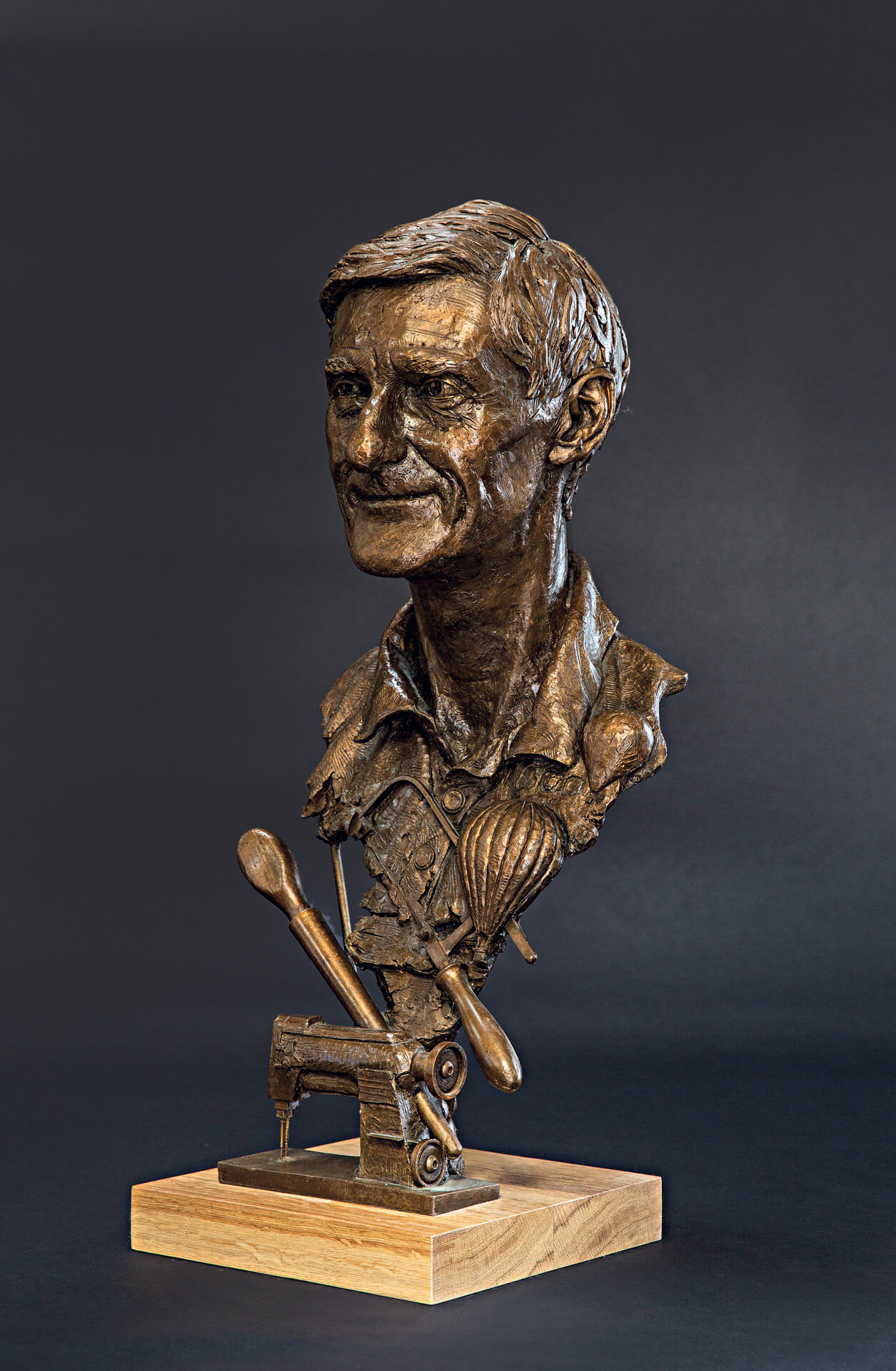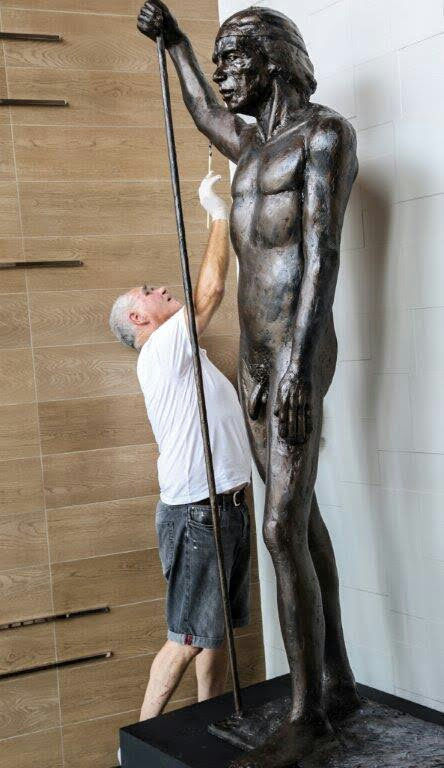Infinite Appeal in Bronze: Unveiling the Art of Bronze Sculptures
Wiki Article
Sculptures as an Expression of Human Feelings
Sculptures have actually long been respected as a powerful tool for sharing the depths and complexities of human emotions. From the serene elegance of a smiling face to the raw strength of a bent number, sculptures provide a ageless and one-of-a-kind window right into the world of human feelings. In this exploration, we will dive right into the extensive effect that sculptures have in sharing and evoking human emotions.The Power of Catching Happiness and Joy
The integral power of sculptures hinges on their capacity to capture and convey the profound emotions of joy and joy with the skilled adjustment of kind and product. Sculptures have actually been used throughout background as a way of sharing human feelings, and happiness and joy are amongst one of the most typical feelings shown in these art types.One of the methods sculptures catch happiness and happiness is with the mindful selection and adjustment of kind. Artists utilize various techniques to create sculptures that stimulate a sense of delight, such as portraying figures in uplifting and vibrant positions, or utilizing flowing curves and lines to develop a feeling of motion and energy.
Moreover, the skilled use faces and motions in sculptures can successfully convey joy and happiness. Artists diligently shape the smiles, giggling, and expressions of delight on the faces of their subjects, bringing them to life and catching the significance of these emotions. The positioning of the body and the gestures depicted by the sculpture can likewise connect a feeling of joy and happiness, whether it is a figure with outstretched arms, dance, or embracing others.
Discovering the Midst of Unhappiness and Sadness
An expedition into the depths of unhappiness and sadness can be attained through the expressive sculptures that catch the significance of these profound feelings. These sculptures act as a visual representation of the human experience, allowing visitors to attach with their own feelings of sadness and sorrow on a deeper degree.Through the skilled control of expression, appearance, and type, artists can communicate the facility feelings related to unhappiness and sadness. Using extended, hunched numbers or contorted, anguished expressions can elicit a feeling of anguish and grief. The option of materials, such as chilly, harsh stone or dark, weathered metal, can better enhance the mournful and melancholic mood of the sculptures.
Moreover, the power of these sculptures depends on their capability to transcend language barriers - Equine Sculptures. Despite etymological or cultural distinctions, the universal language of art enables people from diverse backgrounds to understand and attach with the feelings represented in these sculptures. Portrait Sculptor. It is through this shared experience that a feeling of catharsis and understanding can be accomplished
Unveiling the Intricacy of Love and Need
Revealing the complexities of love and yearning, sculptures use a profound expedition into the intricacy of love and wish. From the tender accept of a couple to the enthusiastic entanglement of bodies, sculptures have actually shown the varied expressions of love and need.One such example is Auguste Rodin's iconic sculpture, "The Kiss." This work of art depicts two fans secured in an intimate embrace, their bodies entwined in a moment of extreme passion. The sculpture not just captures the physical link in between the fans yet likewise stimulates a much deeper psychological bond. The elaborate information and the competent craftsmanship emphasize the complexity of their love and wish.
Sculptures also discover the darker side of love and need, introducing the intricacies that can emerge from these extreme feelings. Portrait Sculptor. Some sculptures portray the torment and anguish that can accompany unrequited love or the destructive power of obsessive desire. These art work work as a pointer that love and need can be both gorgeous and difficult, bringing happiness and pain in equal measure
Sharing Temper and Irritation With Sculptures
Through the portrayal of contorted kinds and strained positions, sculptures express the strength of rage and disappointment. Artists have actually long turned to the medium of sculpture to share these powerful emotions, utilizing various methods to catch the raw power and turmoil connected with anger and frustration.
One common method is to depict numbers in confrontational or hostile positions. The muscular stress and clenched hands of a sculpture can evoke a sense of stifled rage, while twisted limbs and contorted faces can communicate the disappointment felt by the topic. These physical symptoms of feeling function as an aesthetic depiction of the inner turmoil experienced by people in minutes of anger and stress.
In addition, artists frequently use significance and allegory to improve the psychological impact of their sculptures. For instance, sharp, broken types or rugged edges can signify the damaging nature of temper, while heavy, difficult frameworks can represent the weight of stress. By including these elements into their job, musicians are able to interact the strength and complexity of these emotions in a concrete and aesthetically striking way.

Expressing Hope and Resilience in Sculptural Form
Sculptures symbolizing hope and durability are a testimony to the unbeatable spirit of the human experience. These art work function as effective icons of positive outlook and strength in the face of difficulty. With the proficient adjustment of materials, artists are able to record the significance of hope and strength, producing sculptures that uplift and inspire.
One instance of a sculpture that embodies hope is "The Winged Victory of Samothrace." This ancient Greek statue portrays a winged siren standing atop a ship's prow, her garments billowing in the wind. The sculpture radiates a feeling of triumph and decision, representing the power of wish to overcome barriers.
Sculptures that share hope and durability act as pointers of the human ability to withstand and flourish in the face of misfortune. They inspire us to persevere, to find strength in ourselves, and to believe a brighter future. These artworks speak with the global human experience, offering relief and encouragement to those that encounter them.
Conclusion
In final thought, sculptures serve as an effective medium for expressing a wide variety of human feelings (Robert C Hitchcock Sculptor). Via their artistic kind, they capture the essence of pleasure, sadness, love, hope, and rage. Portrait Sculptor. By eliminating personal pronouns, the emphasis remains on the global nature of these feelings and the ability of sculptures to communicate them in a substantial and long-lasting fashion. This highlights the importance of sculptures as a way of expressing and understanding the intricacies of the human experience.Sculptures have long been respected as an effective tool for sharing the midsts and intricacies of human emotions. From the peaceful charm of a smiling face to the raw intensity of a bent number, sculptures supply a one-of-a-kind and classic window right into the globe of human emotions. In this expedition, we will certainly dig right into the profound impact that sculptures have in sharing and evoking human emotions.
In conclusion, sculptures offer as an effective tool for revealing a broad range of human emotions (Contemporary Sculptures). By removing individual pronouns, the focus continues to be on the universal nature of that site these emotions and the ability of sculptures to share them in a long-lasting and substantial way
Report this wiki page